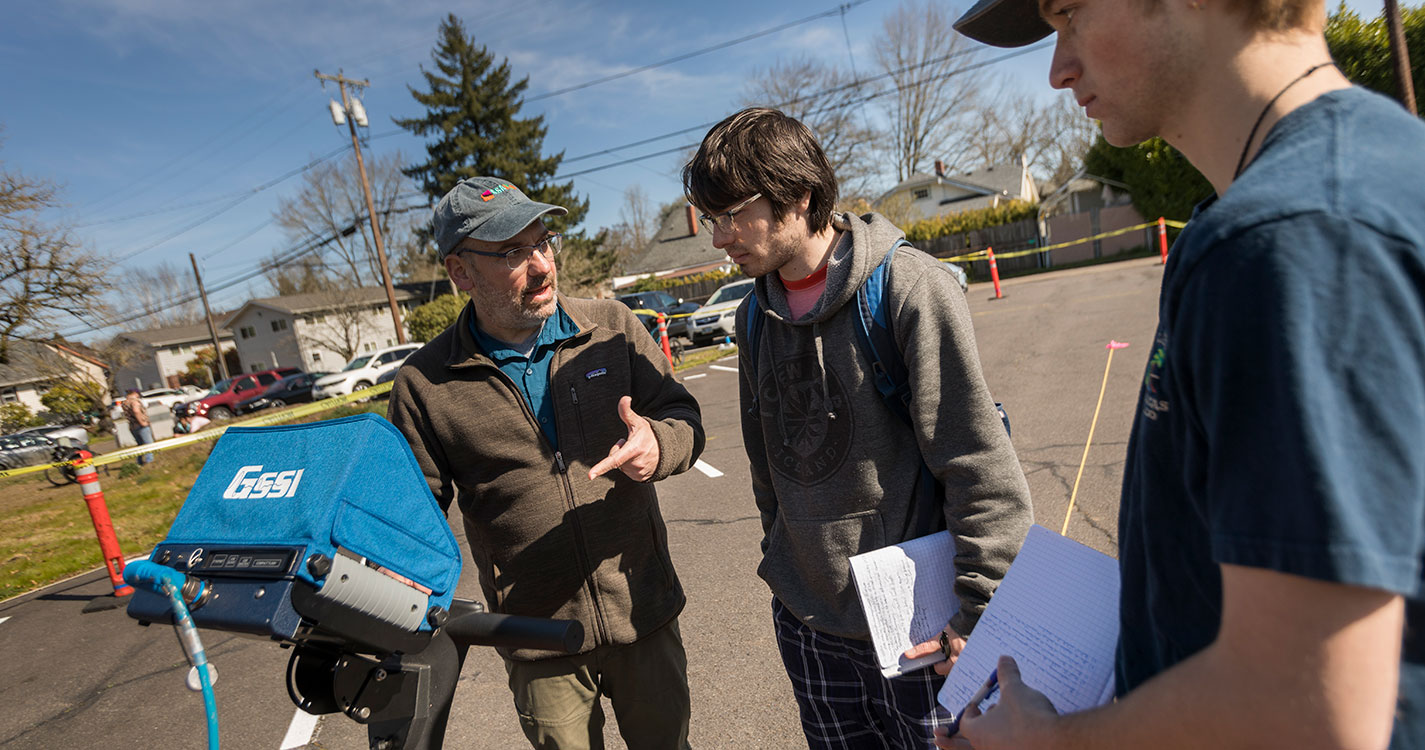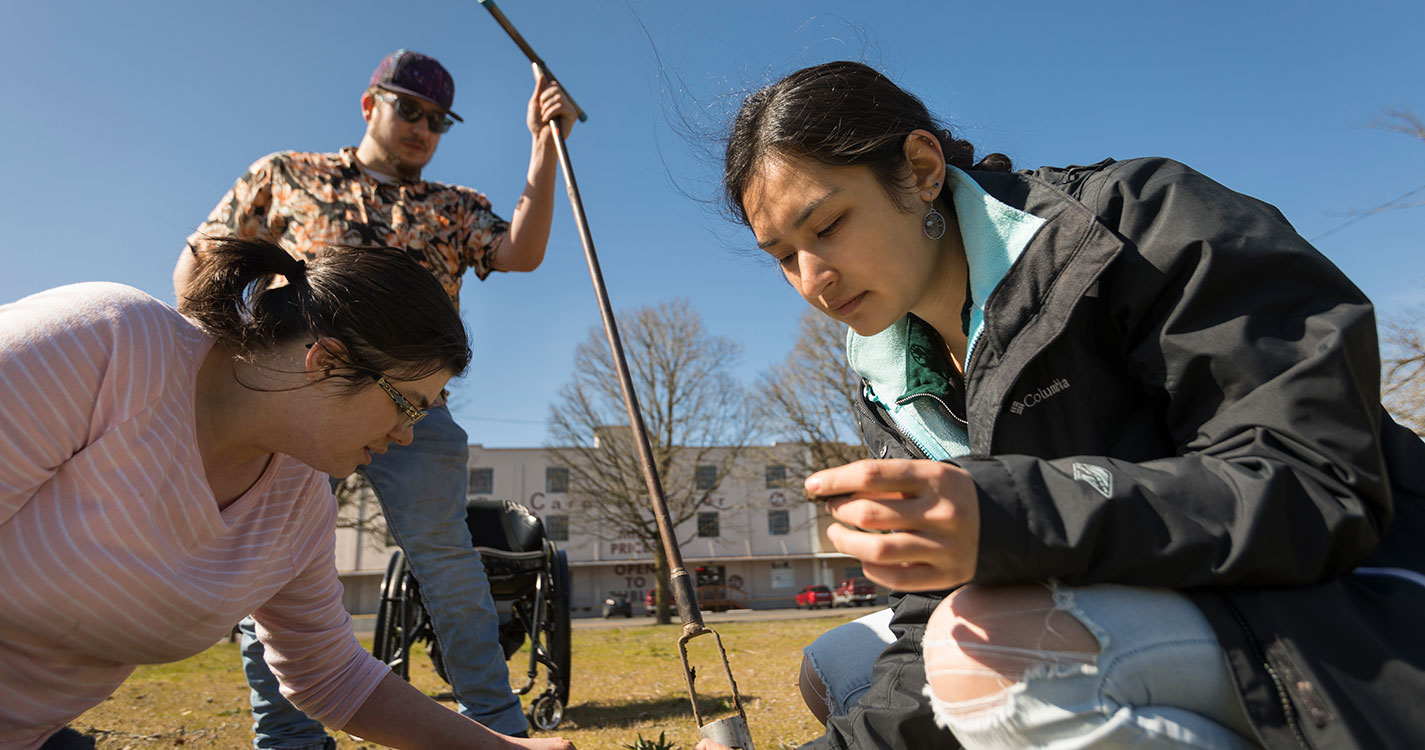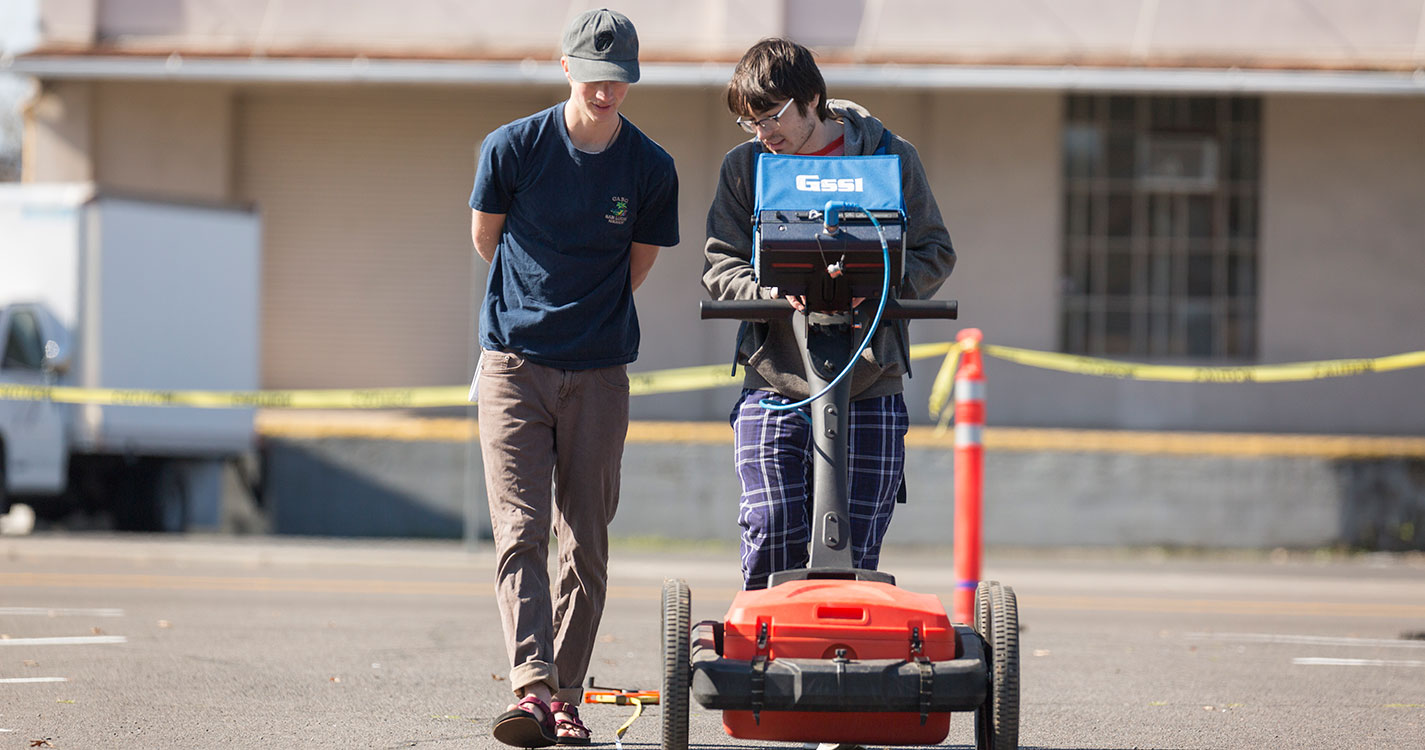A question related to Salem’s biggest historical figure united Willamette students with the city to find the answer: What was the original location of the Jason Lee Mission House?
Students this past semester conducted a geoarchaeological study around the pioneer’s 1841 home, one of the oldest frame homes still standing west of the Rocky Mountains.
Located at the Willamette Heritage Center in Salem since 1965, the house had previously stood at the intersection of Broadway, Liberty and High streets, but the exact original location was never known. Current landowners are working with the city, The Confederated Tribes of Grand Ronde and the university to excavate the site ahead of building a mixed-use complex there.
“It’s a historic part of not just Salem or Willamette, but the state of Oregon,” said Scott Pike, professor of environmental science and archaeology who is leading the class.
Students are working on all phases of the project — including finding Jason Lee’s timber and grist mill, learning more about the missionaries and pre-contact Native Americans who occupied the area — through excavation and analysis of soils and recovered artifacts.
For undergraduates, the opportunity to do this level of work is rare, said Pike. Typically, students participate in an archaeology field school, but don’t often gain practical experience working with professional archaeologists, city planners or tribal historic preservation officers.
Old and new school approach
Research for this project required tools both basic and advanced.
Guided by a 1915 fire insurance map, students used ground penetrating radar — a remote sensory device shaped like a giant orange lawn mower — to detect the foundation of the Lee home basement and a round, three-story structure that may be a windmill. By dragging the radar over a carefully-plotted grid, students use software to generate a tomographic 3D image of the underground features, similar to a CAT scan but for beneath the surface, Pike said.
Kenna Crowe ’21, archaeology major, said the group was excited to see the basement’s wall and floor take shape on the radar screen, as well as a possible extension of the house.
“This project is really exciting because it captures the memory of what Salem used to be like years ago,” she said. “You always read about the past, but now we’re actually able to see the things that were there.”
Another student group created a “dirt milkshake”— literally shaking up dirt and water — to examine how much clay, silt and sand are present in the soil to see if it had been altered by the first occupants, said Mo Stein ’20, archaeology major.
The Lee house project is just one example of Willamette’s partnership with Kimberli Fitzgerald, the city’s cultural resource manager and archaeologist. Students have collaborated on geophysical surveys, including one of a 19th century Chinese shrine at Pioneer Cemetery that earned a city community service award, as well as geoarchaeological research at a police station facility that also earned an award.
Pike said these projects are not only excellent opportunities for students to learn and apply analytical skills, but they also help preserve Salem’s past.
“One of the greatest benefits of our partnerships is that students get to experience and appreciate public archaeology,” he said. “These projects prove that archaeology belongs to everyone and should be shared by the local community, those with direct ancestral connection and the greater community as well.”




